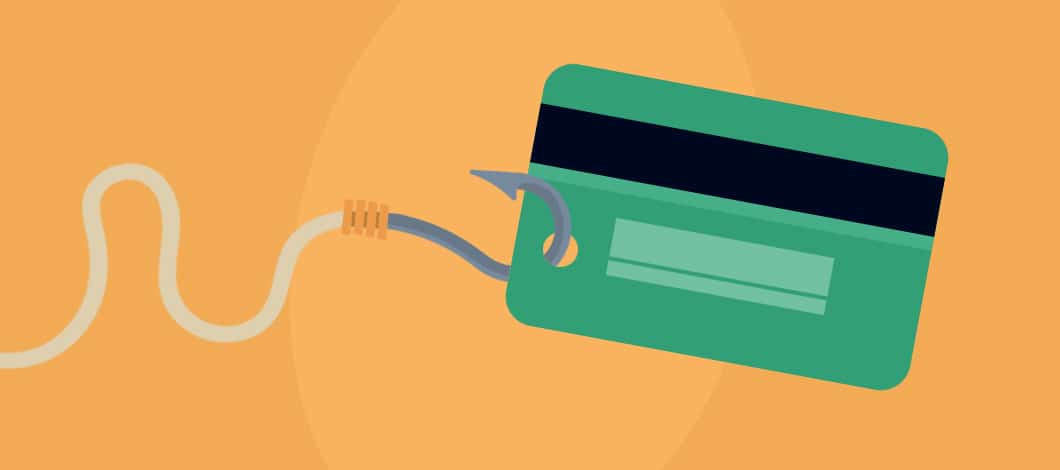Chargeback fraud can cost you money and even keep you from being able to process credit card payments.
Learn how to protect yourself. We’ll cover what chargeback fraud is, what forms it can take, how it hurts companies and how to keep it from harming your business.
What Is Chargeback Fraud?
Chargeback fraud, also known as friendly fraud, is a type of theft where a buyer purchases an item with a credit card or bank transfer and then reverses the payment without a legitimate reason. This allows them to keep their purchase without paying for it.
Meanwhile, the merchant loses the sale. Adding insult to injury, they get billed a chargeback fee. If the merchant receives a large volume of chargebacks in a short time, they even may lose their merchant account, leaving them unable to process credit card payments.
Friendly Fraud and Chargeback Fraud
While the terms “chargeback fraud” and “friendly fraud” are often used interchangeably, they can have different connotations. Chargeback fraud implies deliberate fraud. A friendly fraud chargeback, on the other hand, may be the result of a customer error which, nonetheless, costs the merchant money.
For example, a customer may dispute a purchase because by the time they get their credit card statement, they have forgotten what they bought. Similarly, they might not realize that another family member used their card, or they may be confusing the chargeback process with the proper procedure for returning a purchase.
How Does a Chargeback Scam Work?
Chargeback fraud manipulates legal protections which are in place to protect consumers. The federal government’s Truth in Lending Act gives credit-card holders the right to dispute items on their bill and request the charges be reversed. The Electronic Fund Transfer Act provides similar rights to debit cardholders. These protections are designed to protect consumers from fraudulent use of their credit and debit cards, as well as issues such as payments for items never received, duplicate bills for the same item and unprocessed refunds.
Unfortunately, chargeback thieves have figured out ways to misuse these consumer protections to steal from merchants. Typically, a fraudulent chargeback claim involves pretending that an item was never received, even though it was.
Alternately, the perpetrator may claim that they didn’t authorize the use of their credit card, even though they did. There are other variations, but they all follow the same basic pattern illustrated by these versions of the scam.
These schemes work partly because credit and debit card issuers receive so many chargeback requests that they tend to approve them without challenging them. The burden is on the merchant to prove that fraud didn’t occur, which isn’t easy to do. Many companies decide it isn’t worth it to dispute fraudulent chargebacks, emboldening thieves to continue committing chargeback fraud.

Types of Chargebacks Used for Fraud
Online payment chargeback fraud can involve both physical and digital items. With both physical and digital items, the perpetrator can claim that they weren’t present when their card was used and the transaction was not authorized. Proof of delivery also can be disputed. With physical items, there may be shipping records, but when the item purchased is digital, it can be difficult to prove that the item was actually received.
Purchases made from call centers over the phone or through the mail also can be targets of chargeback scams. As with online purchases, the card isn’t present physically at the time of the transaction, allowing the buyer to claim the purchase was not authorized.
How Does Chargeback Fraud Hurt Businesses?
Chargeback fraud hurts businesses in multiple ways, according to the U.S. Chamber of Commerce. Whether a chargeback involves fraud or not, merchants must pay chargeback fees. These may range from $20 to $100 per instance.
In addition to this fee, the victim of chargeback fraud loses the value of the item which was purchased. Worse, a merchant who accumulates an excessive number of chargebacks in a short time may lose their merchant account, leaving them unable to process electronic payments. For some companies, this potentially could kill your business.
How to Prevent Chargeback Fraud
You can use a number of strategies to prevent chargebacks from being processed fraudulently. In general, these strategies revolve around verifying purchases and documenting delivery to prevent deliberate chargebacks, while communicating clearly with legitimate customers to avoid friendly fraud.
Follow Your Payment Processing Network’s Guidelines
One of the best ways to reduce chargebacks from being processed fraudulently is to follow your payment processing network’s preventive measures. Each payment processing network recommends its own guidelines for verifying purchases. Following these will help you reduce chargeback fraud.
Verify Card Authorization
When cards are physically present, merchants can verify card authorization through methods such as reviewing the signature on the back of the card, requiring a photo identification or using a card reader.
Online, verification can be more difficult, but there are steps you can take, including:
- Require the card security code number in addition to the card number
- Check the address provided by the buyer against the cardholder’s address on file
- For digital orders, email the customer confirmation of their purchase
- For call-center orders, use voice recognition systems or agent-assisted automation technology to record the buyer’s voice authorizing the purchase
- Monitor purchases for unusual orders, such as orders in unusual quantities, and require additional verification in these situations
- Use artificial intelligence to detect fraudulent purchase patterns
Taking these types of steps can help provide documentation that purchases were authorized by cardholders.
Document Delivery
Another key to preventing chargeback fraud is documenting the delivery of items purchased.
For physical items shipped by mail, this can be done by using shipment tracking and requiring signatures upon delivery. For digital items, this can be more difficult, but for some products, you may be able to include a verification of receipt such as an activation code.
Make It Easy for Customers to Process Legitimate Returns
Friendly fraud chargebacks can result when customers become frustrated with your returns process or don’t understand how to request a return and resort to a chargeback instead. Making it easy for customers to process returns can avoid these types of chargebacks.
Take steps such as:
- Allowing customers 30 days to return an item hassle-free if they aren’t satisfied
- Informing customers of your returns policy at the time of purchase
- Making it easy for website visitors to find your returns policy from any page of your site
- Providing 24/7 customer service through a combination of automated and human customer service channels
- Processing all phone calls within 3 rings so that customers with billing questions and return requests can get responses quickly
- Offering bonus credit for customers who are willing to exchange returns for credit
These steps will tend to reduce customer motivation for friendly fraud chargebacks.
Communicate Charges Transparently
Some friendly fraud chargebacks result when customers review their monthly credit card statement and don’t recognize something they bought. This can happen if your transaction description does not clearly identify your company or describe what was purchased.
For instance, the name of your company may not be readily identifiable with the product the customer bought. Using a clearly branded company name and a clear product description can help reduce this type of friendly fraud.
Some chargebacks result from negative option billing, a questionable type of marketing that interprets a customer’s failure to reject an offer or cancel an agreement as an asset to be billed.
For example, an Internet marketer might offer a customer a free month of access to a product and then begin charging the customer a monthly subscription if the customer doesn’t cancel, without the customer actively assenting to be billed. This often results in customers paying for unwanted products or products they forgot they were being billed for. You can avoid this type of chargeback by avoiding negative option billing and requiring customers to explicitly opt in before being billed.
Even when subscription payments are authorized explicitly, customers may forget that they gave their authorization. Sending monthly invoices can help remind customers of their purchases, reducing their inclination to dispute bills.
Stop Chargebacks from Hurting Your Business
Chargeback fraud happens when buyers reverse electronic payments without legitimate reasons. It can happen in transactions involving physical products, digital products and services and call-center purchases. Chargeback fraud hurts businesses by costing merchants the value of items plus chargeback fees, in addition to the risk of losing merchant accounts because of excessive chargebacks.
You can reduce the risk of chargeback fraud by:
- Proactively verifying card authorization
- Documenting delivery of purchases
- Communicating clearly with legitimate customers
Steps for implementing these guidelines included following your payment processing network’s guidelines, using methods such as card security codes to verify purchases, tracking postal deliveries, making legitimate returns easy and avoiding negative option billing.
Following these steps will help you reduce chargeback fraud so you can retain more of your sales revenue.











